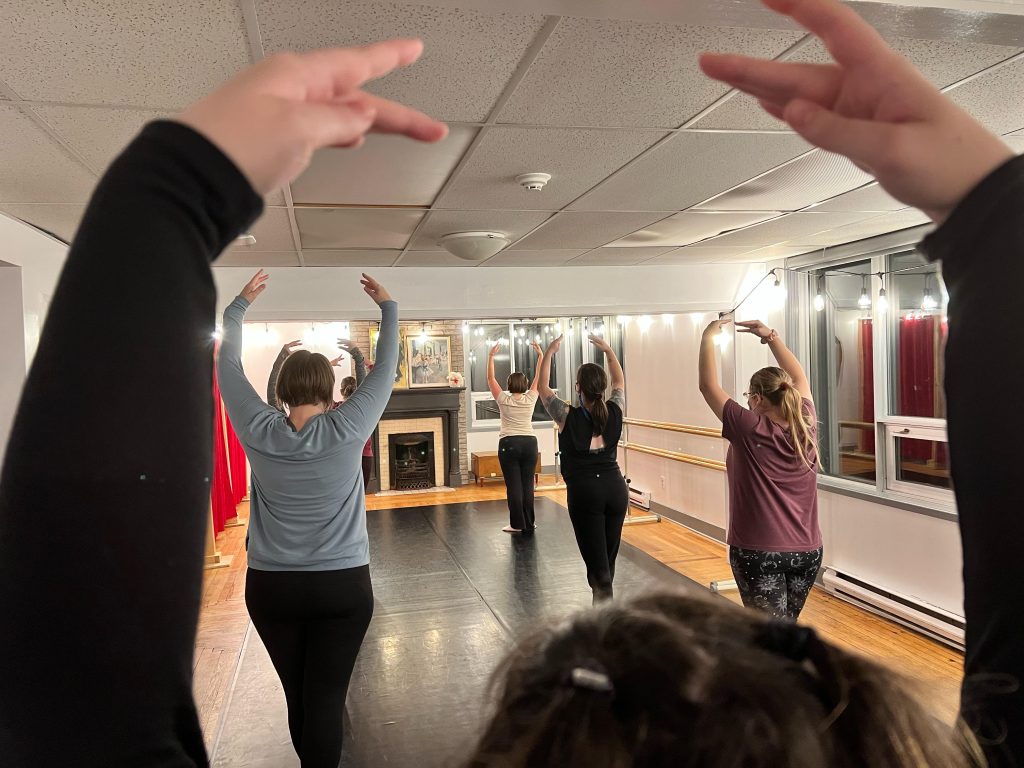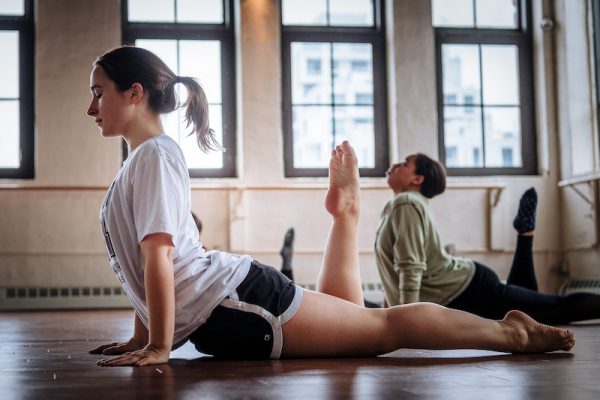This article is published through our Regional Reporter Program. We acknowledge the support of the Canada Council for the Arts through the Digital Now initiative.
***
Some dance studios in Atlantic Canada are seeing renewed interest in their adult classes as lockdown-weary grown-ups seek physical and social activities or decide to return to their childhood passions.
This influx of a new demographic of students surprised some studio owners like dance artists and educators Marcia Dysart, who recently opened First City School of Dance in Saint John, N.B., and Lynn Panting who runs Lynn Panting Dance in St. John’s, N.L.
“My biggest growth and my biggest new audience is actually adults,” Panting said. “People were cooped up in their houses so long, and at the time, there weren’t really any social events.… So they wanted that recreation, that entertainment.”

Both Dysart and Panting expressed that the mental, physical and social benefits of dance make it a great choice for breaking out of a post-lockdown slump.
“I think people are just generally realizing that we need to take better care of our health, and I think dance provides that physical health aspect,” Dysart said. “And it’s great for your mental health as well. Social bonds are created in class and then that growth of confidence that you see week to week.”
Dance has also been linked to increasing physical ability, decreasing depression levels and halting the progression of Parkinson’s disease symptoms in older adults.
Joanne Martin, an occupational therapist in Corner Brook, N.L., has been taking adult recreational dance classes for more than 15 years. She’s developed friendships through dance and is excited for the newcomers who’ve joined her this year. She is grateful for the physical benefits, like feeling more limber, but also appreciates the mental health boost.
“It’s something that I enjoy. So it’s an hour or two out of the week, and it’s literally something that’s just for me,” she said.
This is echoed by Panting, who always asks her students what brings them to class. The refrain she hears from people is “I need to get in touch with my body. I need to do something for me.”
When asked about teaching adults, Panting described her pedagogical approach as always meeting students where they are and helping them achieve their physical and mental goals.
Dysart also emphasizes creativity and artistry in her teaching, regardless of age, and tries to demystify the choreographic process.
“There’s so much responsibility for me as a dance educator to train a well-rounded, healthy dancer,” she said.

But what makes teaching adults different? Dysart hesitatingly admitted that adult students are her favourites because they are receptive; they want to learn and they want to be there. Her new motto is “Every night should end with an adult dance class!”
“Adults have chosen this for themselves,” explained Panting. “So it’s a really special moment for them, and I try not to take that for granted.”
For adults who are interested in practising and not performing, Panting offers six-week introductory classes, and Dysart offers 10-week sessions for beginners and experienced dancers. But Martin doesn’t think these dancers should reject the idea of performing too quickly. Even though she identifies as an introverted and reserved person, she was surprised to find performing is also a fulfilling part of the experience.
“It’s just kind of liberating,” she said. “I can be somebody else and be a little more open … and then go back to my daily life where I’m just me.”
And for those who still think dance classes and recitals are for kids, this increase in participation demonstrates that that’s not the case. Dysart said that, especially because of the effects of the pandemic, “Adults are realizing they don’t have to forgo their hobbies and passions.”
Martin hopes that others will find the inspiration to put any worries aside and just sign up for a class knowing that dance has no age limit.
“If you enjoy something,” she said, “you don’t have to stop because you reach a certain age.”
Tagged:






